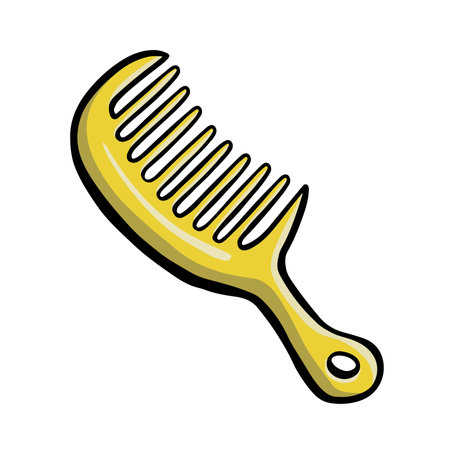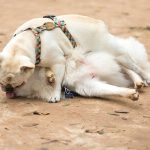1. Understanding Your Cat’s Coat Type
Every cat has a unique coat type, and understanding it is essential for proper grooming. Cats can have short, long, or even curly fur, and each type requires different brushing techniques to keep their coat healthy and tangle-free.
Common Cat Coat Types
Cats come in various fur types, and knowing which one your cat has will help you choose the best grooming routine. Here are the most common coat types:
| Coat Type | Description | Grooming Needs |
|---|---|---|
| Short-Haired | Cats with short fur that lies close to their body. | Low maintenance; brushing once or twice a week helps remove loose hair. |
| Long-Haired | Cats with long, flowing coats that can easily tangle. | High maintenance; daily brushing is recommended to prevent matting. |
| Curly-Haired | Cats with wavy or curly fur, like the Devon Rex or Selkirk Rex. | Moderate maintenance; gentle brushing a few times a week to maintain texture. |
Why Knowing Your Cat’s Fur Type Matters
Your cat’s fur type determines how often they need brushing and what kind of brush works best. Short-haired cats shed less but still benefit from regular grooming to reduce loose hair around your home. Long-haired cats need frequent brushing to prevent painful mats and tangles. Curly-haired breeds require a gentle approach to avoid damaging their unique coat texture.
Selecting the Right Brush for Your Cat’s Coat
The right brush makes grooming easier and more effective. Here are some common brushes based on coat type:
- Bristle Brushes: Ideal for short-haired cats to remove loose fur and add shine.
- Slicker Brushes: Great for long-haired cats to detangle knots and prevent matting.
- Pinned Brushes: Useful for curly-haired cats to gently maintain their coat’s texture.
A well-groomed cat is a happy cat! By understanding your cat’s coat type, you can create a grooming routine that keeps their fur soft, clean, and healthy.
2. Benefits of Regular Brushing
Brushing your cat regularly isn’t just about keeping their coat looking nice—it plays a crucial role in their overall health and well-being. From reducing shedding to preventing hairballs, there are many advantages to making brushing a part of your cat’s routine.
Reduces Shedding and Keeps Your Home Cleaner
Cats naturally shed hair, and without regular brushing, loose fur can end up all over your home. By brushing your cat frequently, you can catch loose hairs before they spread, helping to keep your furniture, clothes, and floors cleaner.
Prevents Hairballs
Cats groom themselves by licking their fur, which means they inevitably swallow some hair. If too much hair accumulates in their stomach, it can lead to uncomfortable hairballs. Regular brushing helps remove excess fur before your cat ingests it, reducing the chances of hairball formation.
Improves Skin and Coat Health
Brushing stimulates your cat’s skin and helps distribute natural oils throughout their coat. This keeps their fur soft, shiny, and less prone to matting. It also promotes better blood circulation, contributing to healthier skin.
Strengthens Your Bond with Your Cat
Grooming sessions provide a great opportunity to bond with your feline friend. Many cats enjoy the sensation of being brushed, especially if introduced gradually with positive reinforcement. Over time, regular brushing can help build trust and deepen your relationship.
Early Detection of Skin Issues
When you brush your cat regularly, you’ll become familiar with the normal condition of their skin and coat. This makes it easier to spot any unusual lumps, wounds, fleas, or signs of irritation early on, allowing for prompt veterinary care if needed.
Choosing the Right Brush for Your Cat’s Coat Type
The type of brush you use can make a big difference in how effective and enjoyable grooming is for both you and your cat. Here’s a quick guide to choosing the right brush based on different coat types:
| Coat Type | Recommended Brush |
|---|---|
| Short Hair | Bristle brush or rubber grooming mitt |
| Medium Hair | Slicker brush or de-shedding tool |
| Long Hair | Pinned brush or wide-toothed comb |
| Cats Prone to Mats | De-matting comb or undercoat rake |

3. Choosing the Right Brush for Your Cat
When it comes to grooming your cat, choosing the right brush is essential. Different coat types require different tools to keep your cat’s fur healthy and tangle-free. Let’s explore some of the most common grooming tools and which ones work best for specific coat types.
Slicker Brushes
Slicker brushes have fine, short wires close together and are great for removing loose fur, tangles, and mats. They work well for long-haired and medium-haired cats, such as Maine Coons and Persians.
Bristle Brushes
Bristle brushes are ideal for short-haired cats. These brushes help remove dirt and distribute natural oils across the coat, keeping it shiny and smooth. If your cat has a sleek coat like a Siamese or American Shorthair, this type of brush is a great choice.
Deshedding Tools
Deshedding tools, such as undercoat rakes, help reduce excessive shedding by removing loose undercoat hair. These are especially useful for double-coated breeds like Ragdolls and Norwegian Forest Cats.
Choosing the Best Brush for Your Cat’s Coat Type
| Coat Type | Recommended Brush |
|---|---|
| Short Hair | Bristle Brush |
| Medium Hair | Slicker Brush |
| Long Hair | Slicker Brush, Deshedding Tool |
| Thick Double Coat | Deshedding Tool, Undercoat Rake |
Additional Tips for Choosing the Right Brush
- If your cat has sensitive skin, opt for softer bristles or rubber brushes to avoid irritation.
- For heavy shedders, using a combination of brushes can help manage fur buildup more effectively.
- Always brush in the direction of hair growth to ensure comfort and prevent pulling.
By selecting the right brush for your cat’s specific coat type, you can make grooming sessions more enjoyable while keeping their fur clean and healthy.
4. Brushing Techniques for Different Coat Types
Proper brushing techniques depend on your cat’s coat type. Whether your feline friend has short or long fur, using the right approach will keep their coat healthy and tangle-free. Below is a step-by-step guide for brushing both short-haired and long-haired cats.
Brushing Short-Haired Cats
Short-haired cats require less frequent brushing but still benefit from regular grooming to reduce shedding and hairballs.
Recommended Frequency:
- 2–3 times per week
- Increase frequency during shedding seasons
Step-by-Step Brushing Guide:
- Select the right brush: Use a soft-bristle brush or a rubber grooming mitt.
- Start with gentle strokes: Brush in the direction of hair growth to remove loose fur.
- Focus on key areas: Pay attention to the back, sides, and chest.
- Check for mats or debris: Even short-haired cats can develop small tangles.
- Finish with a damp cloth: Wipe down the coat to remove any remaining loose hairs.
Brushing Long-Haired Cats
Long-haired cats require more frequent brushing to prevent mats and tangles.
Recommended Frequency:
- Daily brushing is ideal
- Avoid skipping more than a day to prevent tangles
Step-by-Step Brushing Guide:
- Select the right tools: Use a wide-tooth comb for detangling and a slicker brush for finishing.
- Tackle small sections at a time: Divide the fur into sections and brush gently.
- Smooth out knots carefully: Hold the base of tangled fur while detangling to avoid pulling.
- Pays special attention to problem areas:
| Sensitive Area | Caution & Technique |
|---|---|
| Belly & Armpits | Use extra care; work slowly to avoid discomfort. |
| Tails | Avoid tugging; use a fine-tooth comb gently. |
| Ears & Neck | Mats commonly form here; check regularly. |
- Add finishing touches: A final pass with a slicker brush will leave the coat smooth and shiny.
5. Handling a Cat That Dislikes Brushing
Not all cats enjoy being brushed, and some may actively resist it. If your cat dislikes grooming, don’t worry—there are ways to make the experience more positive and stress-free. The key is patience, gradual desensitization, and using positive reinforcement.
Start Slowly and Keep Sessions Short
Begin with short grooming sessions, even if it’s just a few strokes at a time. Over time, as your cat becomes more comfortable, you can gradually increase the duration of brushing.
Use Treats and Praise
Rewarding your cat with treats and gentle praise during and after brushing helps create a positive association. This can encourage them to tolerate grooming sessions better.
Recommended Treats for Positive Reinforcement
| Treat Type | Best For |
|---|---|
| Soft treats | Cats that prefer chewy textures |
| Freeze-dried meat treats | Cats that love high-protein snacks |
| Lickable treats (like Churu) | Cats that need extra motivation |
| Kibble (if they love their food) | Cats on a strict diet or weight management plan |
Choose the Right Brush for Your Cat’s Comfort
Some brushes may feel too harsh on your cat’s skin, making them resist grooming. Try different types of brushes to see which one your cat tolerates best. A soft-bristle brush or grooming glove might be a good option for sensitive cats.
Gradual Desensitization Techniques
If your cat is extremely reluctant to brushing, you can use desensitization techniques:
- Let them sniff the brush: Place the brush near your cat so they can inspect it without fear.
- Touch without brushing: Gently touch your cat with the back of the brush to get them used to its presence.
- Brush in small increments: Start with one or two strokes, then stop before they become agitated.
- Pair brushing with petting: Stroke your cat with your hand first, then introduce the brush slowly.
- Create a routine: Grooming at the same time each day can help your cat anticipate and accept it as part of their daily schedule.
Avoid Forcing Your Cat
If your cat strongly resists brushing, don’t force them. Instead, try again later when they are more relaxed or experiment with different tools and approaches. Forcing grooming can create negative associations that make future sessions even harder.
Know When to Seek Professional Help
If grooming remains a challenge despite your best efforts, consider seeking help from a professional groomer or veterinarian. They can provide guidance on handling difficult cats and recommend alternative solutions for coat maintenance.
With patience and the right techniques, even the most reluctant cats can learn to tolerate—if not enjoy—brushing sessions over time!


